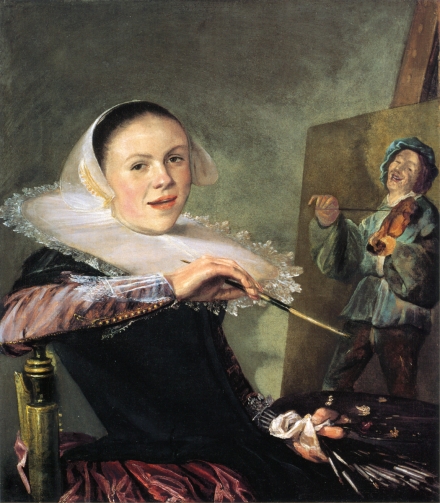Leyster’s Self-portrait at the Easel (c.1630)

Leyster, Self-portrait at the Easel (c.1630) Oil on canvas. National Gallery of Art, Washington, DC
Click image to enlarge.
The equivalence that Judith Leyster imagines between painting and violin-playing is relatively clear in this self-portrait. There is a visual similarity between the painter with a long, thin paintbrush and the violinist with a long, thin bow. Besides, each figure holds their instrument with a raised and bent arm making Leyster's canvas inside the painting a mirror-image of Leyster herself at work.
Click next thumbnail to continue
I have explained under the theme, Music as Art, how musical performance is often thought of by major artists (and lesser ones, too) as a metaphor for the act of painting. Painters in front of their canvas often think of themselves as performers, whether actors, orators or musicians. Here Leyster so clearly imagines this through her own poetic and androgynous mind that she has painted a male performer in her own pose.
More Works by Leyster
Notes:
Original Publication Date on EPPH: 26 Mar 2012. | Updated: 0. © Simon Abrahams. Articles on this site are the copyright of Simon Abrahams. To use copyrighted material in print or other media for purposes beyond 'fair use', you must obtain permission from the copyright owner. Websites may link to this page without permission (please do) but may not reproduce the material on their own site without crediting Simon Abrahams and EPPH.

